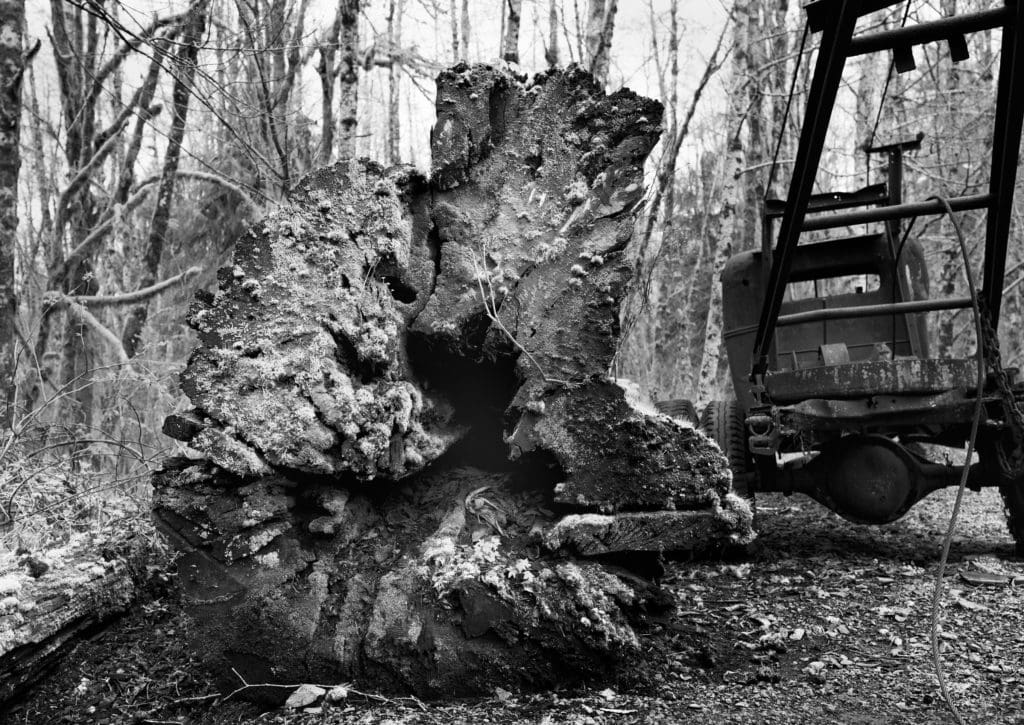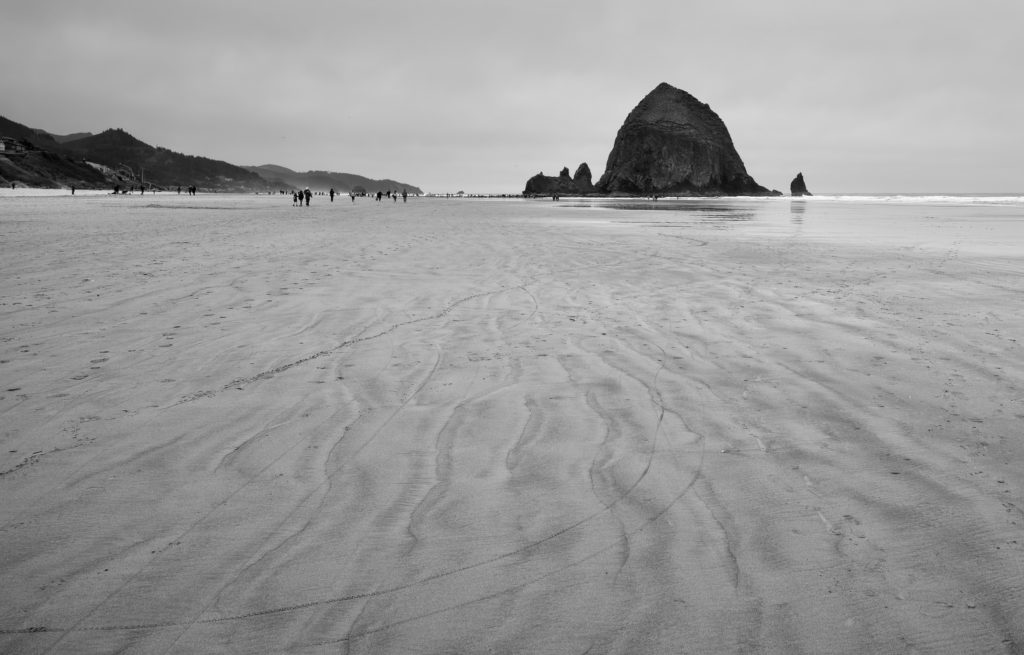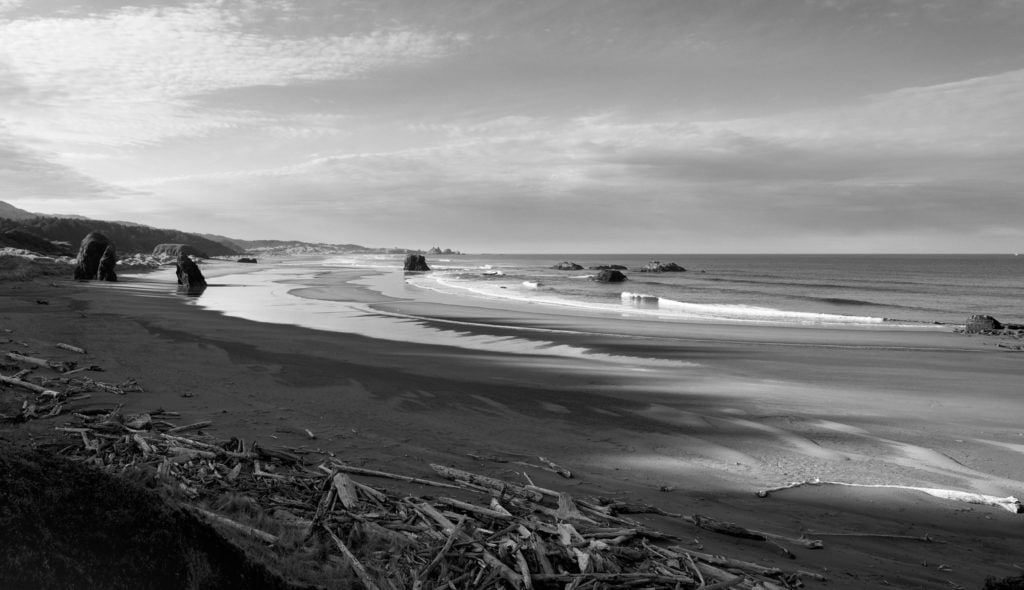US-26 To the Coast
 It was day four of our epic roadtrip from Vancouver to Tijuana, and time to hit the Oregon coast. Over the past three days, of the 1,823 miles we would eventually travel between Mexico and Canada we had covered just over 300. We were also now heading slightly northward so that I could shoot Cannon Beach. Nick and Ted were impatient to head South, but 60 miles from Portland on US-26 we saw an incredible assortment of rusting and antiquated machinery, and decided to stop. Barring our short visit to Gas Works Park, Seattle, the trip had not been a photographic success so far. Heavy cloud in Vancouver, heavy rain in Seattle and heavy drinking in Portland had all got in the way.
It was day four of our epic roadtrip from Vancouver to Tijuana, and time to hit the Oregon coast. Over the past three days, of the 1,823 miles we would eventually travel between Mexico and Canada we had covered just over 300. We were also now heading slightly northward so that I could shoot Cannon Beach. Nick and Ted were impatient to head South, but 60 miles from Portland on US-26 we saw an incredible assortment of rusting and antiquated machinery, and decided to stop. Barring our short visit to Gas Works Park, Seattle, the trip had not been a photographic success so far. Heavy cloud in Vancouver, heavy rain in Seattle and heavy drinking in Portland had all got in the way.
We had pulled over at Camp 18 Logging Museum, so called because early logging operations always numbered their camps and the museum is located at mile post 18 on Highway 26, 18 miles from the coast. There is a great collection of old logging machinery outside in the car park, including steam engines, giant mechanical saws. tractors and the battered old logging truck shown left.
Logging is central to Oregon’s history. Kick -started by California’s gold-rush and boosted hugely by WWII, the demand for lumber grew and Oregon became a central national and international timber producer with thousands of logging operations. Today natural resources are a much smaller part of Oregon’s economy, which has shifted to manufacturing, services, and high tech industries.
It was too early for lunch but the restaurant made for interesting viewing – the massive doors are opened with axe handles and the dining room room is held up by an enormous log some 85 foot high and weighing many tons. There are also several very large wooden statues of the local cryptid Big Foot. In the gift shop Ted enquired if the shop assistant had ever seen one of the giant wilderness-dwelling bipeds, expecting a dismissive reply. “You wouldn’t be able to see one if it were stood right next to you”, was her surprising response. Inspired by this, Nick downloaded an app to track sightings of cryptids in the US and kept us informed of the latest in our vicinity throughout the rest of the trip. It turns out that cryptid hunting and crypto zoological groups are quite popular in the US. Big Foot has plenty of legendary company as this map shows.
 Cannon Beach
Cannon Beach
Ever more mindful of the distance we still had to cover, we got back in the Chav Wagon and headed for the coast. We arrived at Cannon Beach, named after a ship’s cannon that washed ashore in 1846, around noon. The beach each is famous for the 235 ft high monolith Haystack Rock, which is flanked by the Needles – a pair of tall companion rocks. It is one of the largest sea stacks on the Pacific Coast and is home to a colony of Puffins. Canon Beach is probably the best known beach on the Oregon coast, certainly to photographers – but there are several others to explore, which are well described in this article on the best beaches in Oregon.
I carefully set up my tripod from a couple of different angles, watched with a mixture of mirth and frustration by my travelling companions, who were both feeling the chill on the windswept beach. Focused on my photography I barely noticed the cold, or that the odd hour or two that had passed.
The Oregon Coast Highway
We had coffee at Sleepy Monks near the beach and then joined the Oregon Coast Highway, which would be our companion for the rest of the day. Its a spectacular piece of two lane blacktop, but subject to landslides, which require a diversion across the coastal range of mountains we had just crossed. Google Maps showed a distance of 285 miles and a journey time of 6 hours 28 minutes to our next destination, which was Gold Beach. We paused at Neahkahnie Viewpoint, near Manzanita to admire the view of the apparently endless curve of the beach and numerous other scenic spots along the coast before stopping for lunch at Gracie’s Sea Hag in Depoe Bay, which claims the world’s smallest harbour.
In addition to the coast views we were much taken by the many fine bridges we crossed, such as the Siuslaw River Bridge at Florence. They were constructed in the 1920s and 1930s and the product of one man’s vision. This was Conde B. McCullough, the Oregon state bridge engineer from 1919 to 1935 who combined Gothic Art Deco and Art Moderne sources to great effect.
The Road To the Lodge
After lunch we made a few more stops for photography, most notably at Humbug Mountain, which we considered to be the perfect habitat for American Hobbits. By the time we got to Gold Beach it was about 8PM, and we were feeling tired and hungry again. Gold Beach (originally Ellensburg and renamed after gold was found on a nearby beach), is not the most prepossessing of seaside towns – its known for its jet boat rides on the Rogue River and little else. The only reason we were stopping there was that we had found an interesting place to stay which conveniently broke our journey. This was the Tu Tu’ Tun Lodge, located some miles outside town on the Rogue River. The road to the lodge was impenetrably dark, somewhat narrow and fearsomely winding. On our right hand side there appeared to be some precipitous drops into we knew not what. This combination did not suit vast bulk of our Chevy Suburban particularly well. To increase our peril, every mile or so a deer would leap out into the road in front of us, seemingly tired of life. We were relieved to arrive at the lodge safely but found it to be extremely quiet; the main building was locked and deserted. Our keys were in envelopes outside. We inspected our rooms which were cabin style found them to be very well appointed with a good sized wood fire. A wood fire was all very well, but our thoughts at this point were on dinner.
Gold Beach
 I remembered that there was a small shop some miles back towards Gold Beach, so we set off towards the town. After a few more close calls with deer we came to the Rogue River Grocery and Tavern in the apparently invisible community of Agness. As we entered the grocery, lit with an eerie yellow light quite possibly not of this earth, I noticed a large and rather disreputable looking stuffed turkey in one corner. The head had been removed at some point and glued back on, with a visible white join. The tavern was out back and in near darkness; a lone drinker sat motionless in the dark. Reviewing our our choice of ingredients for dinner we found them be be rather limited and settled on a couple of tins of spam, some burger rolls and a copious amount of assorted beer. With the certainty of eating established, albeit not very well, we quizzed the store keeper about what dining options there might be in Gold Beach. He shook his head disapprovingly. “You won’t get anything in town at this time of night. It’s all shut up now.” He spoke to us as if we had rolled in at midnight expecting dinner, but actually it was only 8.30 in the evening.
I remembered that there was a small shop some miles back towards Gold Beach, so we set off towards the town. After a few more close calls with deer we came to the Rogue River Grocery and Tavern in the apparently invisible community of Agness. As we entered the grocery, lit with an eerie yellow light quite possibly not of this earth, I noticed a large and rather disreputable looking stuffed turkey in one corner. The head had been removed at some point and glued back on, with a visible white join. The tavern was out back and in near darkness; a lone drinker sat motionless in the dark. Reviewing our our choice of ingredients for dinner we found them be be rather limited and settled on a couple of tins of spam, some burger rolls and a copious amount of assorted beer. With the certainty of eating established, albeit not very well, we quizzed the store keeper about what dining options there might be in Gold Beach. He shook his head disapprovingly. “You won’t get anything in town at this time of night. It’s all shut up now.” He spoke to us as if we had rolled in at midnight expecting dinner, but actually it was only 8.30 in the evening.
Unsure that this assessment was sound, we headed into town and found the Sea Star to be open. The Sea Star was a local’s place, but friendly enough, though I was a little wary of the man who paced up and down the bar the entire time we were there. We some ordered bar snacks, but as they turned out to be rather insubstantial, we finished our drinks and headed back to the lodge. We lit the fire in my room and Nick cooked spam over the wood fire, which we ate in the burger rolls as we tucked into the beer. Surprisingly, this turned out to be a better supper than we had expected.
The next morning we awoke to the full glory of being out in the Oregon wilderness. The Tu Tu’ Tun Lodge really is in a beautiful location. It’s primary disadvantage for us is that it really is a very long way from Mexico. This was to be the big mileage day; we had to be cover the 408 miles to San Francisco, which Roadtrippers estimated at 7 hours 15 minutes. Somehow we also had to find time to stop at least a couple of times to see the giant Redwoods of Northern California. As soon as we hit the coast road we saw a succession of beautiful beaches. The beaches of the Oregon coast are long and wild. The forests come down close to the shoreline, and the shore is decorated with bleached white driftwood. Offshore, there are large rocks and sea stacks. In the soft early morning light they were quite breathtaking. Road tripping on the Oregon coast is often shaded by neighbouring California, but having travelled the length of the US West Coast I can honestly say that it was Oregon that impressed me most.